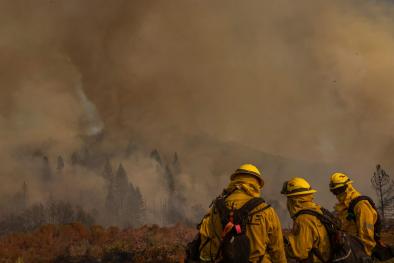Science Source
In the observational record half a degree matters
We have to rely on climate models to predict the future. But given that we now have observational evidence of around 1°C warming, we can also look at the real-life impacts this warming has brought.
Carl-Friedrich Schleussner, lead author and researcher at the Potsdam Institute of Climate Impact Research
- States that discriminating the climate impacts of half-degree warming increments is high on the post-Paris science agenda
- States that attribution studies typically refer to climate change since the 1950s or later (due to limitations in length and spatial coverage of the observational record), which corresponds to only slightly more than 0.5 °C of observed warming at most
- Assesses extreme weather indices for the 1991–2010 versus the 1960–1979 period, which corresponds to just about 0.5 °C GMT difference in the GISTEMP temperature record
- Quantifies probability density functions for the globally aggregated differences between grid-cell-averaged extreme event indices
- Finds that substantial changes due to 0.5 °C warming are apparent for indices related to hot and cold extremes (annual maximum value of daily maximum temperature TXx, annual minimum value of daily minimum temperature TNn) as well as the Warm Spell Duration Indicator (WSDI)
- Argues that evidence from the observational record provides useful guidance for such assessments

Figure 1: Probability density functions show the globally aggregated land fraction that experienced a certain change between the 1991–2010 and 1960–1979 periods for the HadEX2 and GHCNDEX datasets. For TXx, we also included reanalysis data from ERA and 20CR over the global land area. Light-coloured envelopes illustrate the changes expected by internal variability alone, estimated by statistically resampling individual years.
Related Content
Headline

Feb 7, 2024 | Climate Nexus Hot News
Heat And Smoke Are Worse Together Than Apart
Science Source
| Science Advances
Unprecedented climate events: Historical changes, aspirational targets, and national commitments
Noah S. Diffenbaugh, Deepti Singh, and Justin S. Mankin
Science Source
| American Meteorological Society
Sixfold Increase in Historical Northern Hemisphere Concurrent Large Heatwaves Driven by Warming and Changing Atmospheric Circulations
Cassandra D. W. Rogers , Kai Kornhuber , Sarah E. Perkins-Kirkpatrick et al
Science Source
| American Meteorological Society
Diverse Characteristics of U.S. Summer Heat Waves
Bradfield Lyon and Anthony G. Barnston


